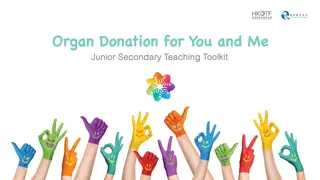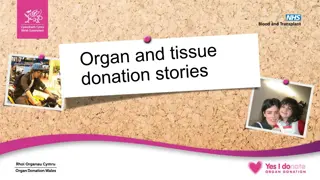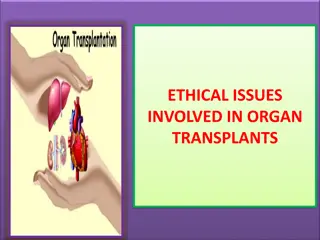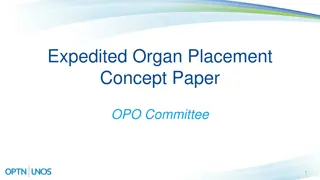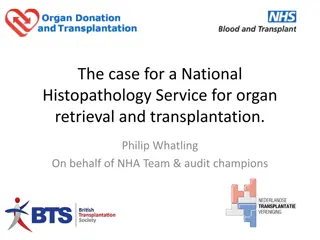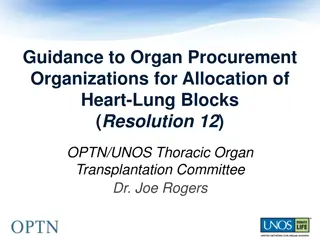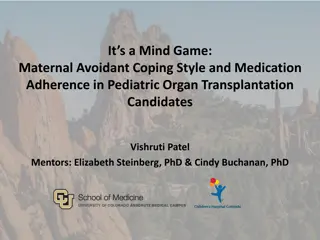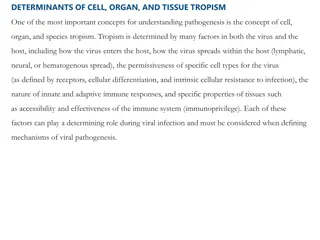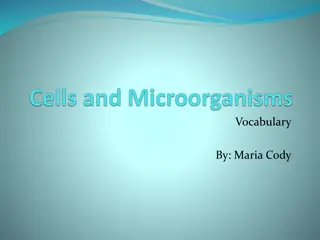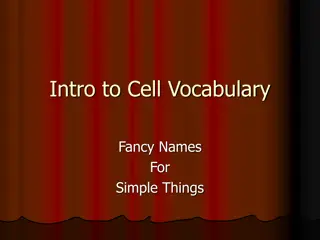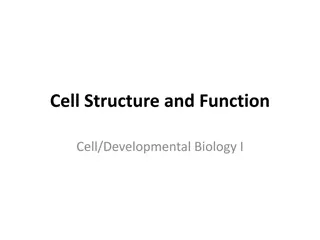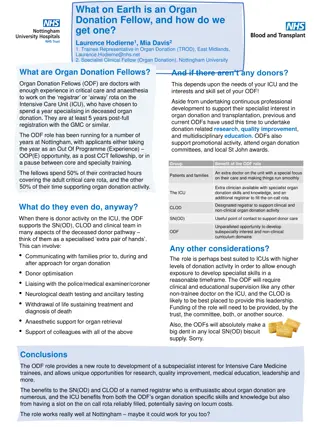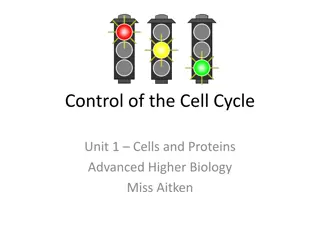Cell Biology Overview and Organ Systems in Biology Paper 1
The Biology Paper 1 content covers topics such as cell specializations, cell division, organelles, enzyme functions, and organ systems including the cardiovascular system. It discusses key concepts like stem cells, mitosis, diffusion, osmosis, active transport, and various cell components such as nucleus, mitochondria, ribosomes, and more. The organ system details include information on the digestive system, blood cells, and treatments for cardiovascular diseases like cancer and cholesterol build-up.
Download Presentation

Please find below an Image/Link to download the presentation.
The content on the website is provided AS IS for your information and personal use only. It may not be sold, licensed, or shared on other websites without obtaining consent from the author.If you encounter any issues during the download, it is possible that the publisher has removed the file from their server.
You are allowed to download the files provided on this website for personal or commercial use, subject to the condition that they are used lawfully. All files are the property of their respective owners.
The content on the website is provided AS IS for your information and personal use only. It may not be sold, licensed, or shared on other websites without obtaining consent from the author.
E N D
Presentation Transcript
BIOLOGY PAPER 1 CELL BIOLOGY
TOPIC 1 CELL BIOLOGY Cell Specialisation Microscopy Convert numbers Standard form There are 5 specialisations: 1. Sperm cells Reproduction 2. Nerve Cells Rapid signalling 3. Muscle Cells Contraction 4. Root Hair Cells Water and mineral absorption 5. Phloem and Xylem Cells Transporting substances Image size Subcellular Structure Function Nucleus Contains DNA and controls cell Stem Cells Mitosis Cytoplasm Most chemical reactions happen Unspecialised cells that can become another type of cell to be used for a number of medical advances and can cure many diseases. The growing and division of cells to repair and maintain existing cells. This process has two parts: Growth and DNA Replication 1. Cell develops more subcellular structures and duplicates DNA into X shaped chromosomes. Each arm of the chromosome is a direct replicate of the other. Mitosis 2. Chromosomes line up at the centre and cell fibres pull them apart. The two arms go to opposite ends of the cell. 3. Membranes form around each set of chromosomes, these form into each cell s nucleus 4. The cytoplasm and cell membrane divide. The cell has now become two exactly identical daughter cells. Cell Membrane Holds cell together controls what goes in and out People are against Stem Cells due to the fact that the most useful ones are from Human Embryos, adults do produce Stem Cells, however these can only turn into certain cells. Mitochondria Produce energy from respiration Ribosomes Where proteins are synthesised Diffusion Particles moving from an area of High concentration to low concentration Osmosis Diffusion of water molecules Active Transport Particles moving from an are of low concentration to high concentration requires energy Cell Wall Supports and strengthens cell Vacuole Storage of sugars and supports cell Chloroplasts Where photosynthesis happens Bacteria cells are different, they have strings of DNA and loops called plasmids Diffusion Osmosis Active Transport
BIOLOGY PAPER 1 ORGANISATION
Enzyme Location Function TOPIC 2 - ORGANISATION Amylase Salivary glands, Pancreas, Small intestine Breaks starch into sugars Bile is produced in liver, stored in gall bladder and it neutralises the HCl acid found within the stomach to let the enzymes in the small intestine function properly. Protease Stomach, Pancreas, Small intestine Breaks proteins into amino acids Cell Organisation Organ a set of specialised cells organised into tissues. Organ system - a series of organs designed for one specific job. EG. Digestion Lipase Pancreas, Small intestine Breaks lipids into fatty acids Vessel Where Lumen How Artery Away from heart Thick wall, Small lumen High pressure to continue blood flow Breaths Vein To the heart Thin wall, Large lumen Low pressure, valves to keep direction correct Capillary Exchanges of materials at tissues One cell thick wall, Very small lumen Permeable walls increasing the rate of diffusion The Lungs Contain alveoli, where gaseous exchange occurs between O2 and CO2 Blood Cells Red Carry O2, Disk shape for function, Haemoglobin binds with O2 to become Oxyhaemoglobin (to carry the O2). No nucleus White Produce antibodies which defend against infection, they have a nucleus Platelets Help blood clot to stop bleeding out, no nucleus Plasma A liquid that carries blood cells, nutrients, CO2,Urea (waste), Hormones, Proteins, Antibodies / Antitoxins Transpiration and Translocation Phloem Tubes Transport food, transport can go in both directions Translocation Xylem Tubes Take water up from roots to stem and leaves Transpiration Stream Transpiration loss of water from the plant, side effect of Photosynthesis. Cardiovascular Disease Cancer Build of LDL cholesterol in the arteries, which makes it harder for blood to pass through. There are 2 ways of treating this, Stents and Statins. Stents are a mesh that is inserted into the artery then blown up to squeeze the LDL to the edge. Statins are a regular drug that can be taken, it contains HDL (good) cholesterol which can remove the LDL, however it isn t an instant effect. Uncontrolled cell growth and division. Benign Grows until no more room in one place. Does not invade other tissues. Not dangerous (Normally) Malignant Grows wherever, cells can break off and grow somewhere else. Can be fatal
BIOLOGY PAPER 1 INFECTION & RESPONSE
Phagocytosis the process of white blood cells engulfing and digesting pathogens TOPIC 3 INFECTION & RESPONSE The Ways White Blood Cells Protect 1. Engulfing pathogens 2. Antibodies to attack cell 3. Antitoxins to neutralise toxins released 3 Stages of Drug Testing 1. Preclinical trails human cells and tissues, however doesn t apply for drugs for whole organ systems 2. Animal trials drug tested on 2 animals, to find efficacy, toxicity and correct dosage 3. Clinical trials blind trials, with placebos often offered. Can be double-blind, so the doctor doesn t know either Vaccination Small amounts of a dead pathogen, to allow the whit blood cells to create a template of antibodies. Protects against epidemics. Disease Symptoms Spread by Plant Diseases Salmonella Fever, stomach cramps, vomiting, diarrhoea Eating contaminated food B Common signs of diseases: stunted growth, spots on leaves, patches of decay, abnormal growths, malformed stems or leaves, discolouration. Gonorrhoea Pain when urinating, yellow / green discharge from penis / vagina STD sexual contact B Monoclonal Antibodies Monoclonal antibodies are identical antibodies, produced from a single white blood cell, meaning that all antibodies are identical and will only target one specific protein allergen. They can bind anything, and will only bind to that thing which means it can easily target a specific cell Measles Red rash, fever, can lead to pneumonia or encephalitis (brain infection) Droplets from an infected sneeze or cough V HIV Flu-like, attacks immune cells Sexual contact, or sharing bodily fluids V Communicable Diseases Bacteria are small living cells, they produce toxins which causes you to feel ill, by damaging body cells and tissues Viruses are not a cell. They replicate within cells, to the point where they burst and cause cell damage. Cell damage is what causes you to feel ill. Protists are single-celled Eukaryotes most being parasites. Parasites can cause damage inside or on other organisms. It is transferred by a vector. Fungi have a body made up of hyphae (thread-like structures). These hyphae can grow and penetrate human skin causing diseases. They can produce spores which can be spread to other plants or animals Tobacco Mosaic Virus (TMV) A mosaic pattern on leaves and discolouration leads to less photosynthesis Plant contact, V Rose black spot Black or purple spots meaning photosynthesis can t be carried out Water or by wind F Malaria Repeating episodes or fever. Can be fatal Vectors mosquitos P
BIOLOGY PAPER 1 BIOENERGETICS
Carbon Dioxide 6CO2 + + Oxygen Light water Glucose TOPIC 4 BIOENERGETICS + 6H2O C6H12O6+ 6O2 Factors that Effect the Rate of Photosynthesis 1. Light Not enough 2. Carbon Dioxide Too little 3. Temperature Too high or low Photosynthesis Rate of Photosynthesis Photosynthesis produces glucose by using light, takes place within a plants chloroplasts, which contains chlorophyll that absorbs light. Photosynthesis is an ENdothermic reaction, meaning that heat is transferred from the environment during the process. Inverse square law: Light Intensity = 1 Distance Respiration & Metabolism Respiration is the process of transferring energy from glucose, which occurs in every cell. Respiration is EXothermic, heat is transferred to the environment. Aerobic Respiration Respiration using oxygen, happens all the time on plants and animals. Most aerobic respiration happens in the cells Mitochondria Carbon Dioxide + Oxygen + Water Glucose C6H12O6+ 6O2 6CO2 + 6H2O Lactic Acid Anaerobic Respiration Anaerobic respiration happens when not enough oxygen is available, therefore 2 different equations are used one for animals and one for plants Animal Glucose Carbon Dioxide Plant Glucose Ethanol Response to exercise Anaerobic Respiration in Humans Anaerobic respiration leads to an oxygen debt, which is a build up of Lactic Acid, which is converted from glucose, within the muscles during exercise. This Lactic Acid has to be removed after exercise as it causes harm to the muscles. It is flushed out using oxygen, to repay the debt. The Lactic Acid can also enter the blood stream and get sent to the liver where it is converted back to glucose. Better more efficient use of lungs Positive psychological response to exercise Better more efficient heart Lower resting HR Quicker recovery response to exercise Higher metabolism Larger lean muscle mass - higher need for energy to feed the muscle Increased amount of mitochondria Leaner body composition



